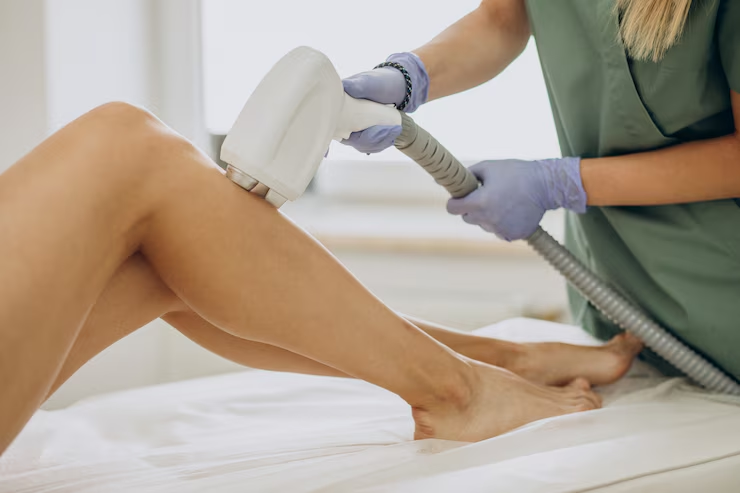What Does a Glycolic Acid Peel Do for Skin?
A Glycolic Acid Peel is a powerful skincare treatment widely used by dermatologists to rejuvenate and enhance the skin’s overall appearance. It works by exfoliating the outermost layer of dead skin cells, revealing a fresh, radiant complexion beneath. This treatment is a favorite among individuals looking to improve skin texture, reduce fine lines, and achieve a youthful glow. Dermatologists recommend glycolic acid peels for treating various skin concerns such as uneven skin tone, acne scars, and dullness. The procedure is carefully performed by professionals to ensure maximum effectiveness and safety. If you are looking for a professional solution to revitalize your skin, consider getting a Glycolic Acid Peel in Dubai.
Understanding Glycolic Acid Peels
Glycolic acid, an alpha-hydroxy acid (AHA) derived from sugarcane, is renowned for its ability to penetrate deeply into the skin. Unlike other exfoliating treatments, it works at a cellular level to dissolve the bonds holding dead skin cells together. This allows the skin to shed naturally, revealing a smoother and more even-toned complexion. Dermatologists carefully apply the peel in controlled concentrations to ensure optimal results without damaging the skin barrier.
How Dermatologists Perform a Glycolic Acid Peel
Professional glycolic acid peels are performed in a controlled environment under expert supervision. The treatment begins with a thorough skin analysis, where the dermatologist assesses your skin type, concerns, and suitability for the procedure. After cleansing the skin, a pre-peel solution is applied to prepare the surface for the glycolic acid.
The glycolic acid solution is then applied evenly across the face, where it remains for a predetermined time based on the patient’s skin sensitivity. Patients may feel a mild tingling sensation, indicating that the acid is working. Once the peel has effectively exfoliated the skin, the dermatologist neutralizes the acid with a special solution to stop its activity. Finally, a soothing mask or moisturizer is applied to hydrate and calm the skin.
Benefits of a Glycolic Acid Peel
Improves Skin Texture: By eliminating dead skin cells, the peel smoothens rough and uneven patches.
Boosts Collagen Production: Stimulates collagen synthesis, reducing fine lines and wrinkles for firmer skin.
Fades Hyperpigmentation: Effectively lightens dark spots, sun damage, and melasma.
Clears Acne and Reduces Breakouts: Unclogs pores, preventing acne formation and reducing existing blemishes.
Enhances Skin Radiance: Reveals a youthful glow by removing dull, tired skin layers.
Minimizes Pore Size: Helps in reducing the appearance of enlarged pores by deep cleansing.
Speeds Up Skin Renewal: Encourages faster cell turnover for long-term skin health.
Who Can Benefit from a Glycolic Acid Peel?
Dermatologists often recommend glycolic acid peels to individuals dealing with common skin concerns such as acne scars, sun damage, aging signs, and uneven texture. Those with oily or combination skin types benefit greatly from the exfoliating properties of this treatment. However, professional consultation is essential to determine the right concentration and frequency of treatment for each individual.
What to Expect After a Glycolic Acid Peel?
Immediately after the treatment, the skin may appear slightly red, which subsides within a few hours. Over the next few days, patients may notice mild flaking as the old skin cells shed, revealing fresher skin underneath. Dermatologists recommend following a gentle skincare routine and using sunscreen to protect the renewed skin from UV damage.
How Often Should You Get a Glycolic Acid Peel?
The frequency of glycolic acid peels depends on individual skin concerns and professional recommendations. Generally, dermatologists suggest undergoing a series of treatments spaced a few weeks apart for optimal results. Regular sessions ensure long-lasting benefits and continuous skin improvement.
FAQs
How long does a glycolic acid peel take?
A professional glycolic acid peel session typically takes 30 to 45 minutes, including preparation and aftercare.
Is a glycolic acid peel painful?
No, most patients experience only a mild tingling or warming sensation during the procedure.
Can glycolic acid peels treat acne scars?
Yes, glycolic acid peels help fade acne scars by promoting skin renewal and collagen production.
How soon can I wear makeup after a glycolic acid peel?
It is advisable to wait at least 24 hours before applying makeup to allow the skin to recover.
Are glycolic acid peels suitable for all skin types?
While generally safe, individuals with sensitive skin should consult a dermatologist to determine the appropriate concentration.
Conclusion
A Glycolic Acid Peel is a highly effective dermatological treatment that rejuvenates the skin by exfoliating dead cells, improving texture, and promoting a youthful glow. With professional application, this peel offers remarkable benefits, from reducing fine lines and acne scars to enhancing overall skin health. Whether you seek a refreshed complexion or targeted treatment for skin concerns, consulting a dermatologist ensures the best results tailored to your skin’s needs.




Comments
Post a Comment